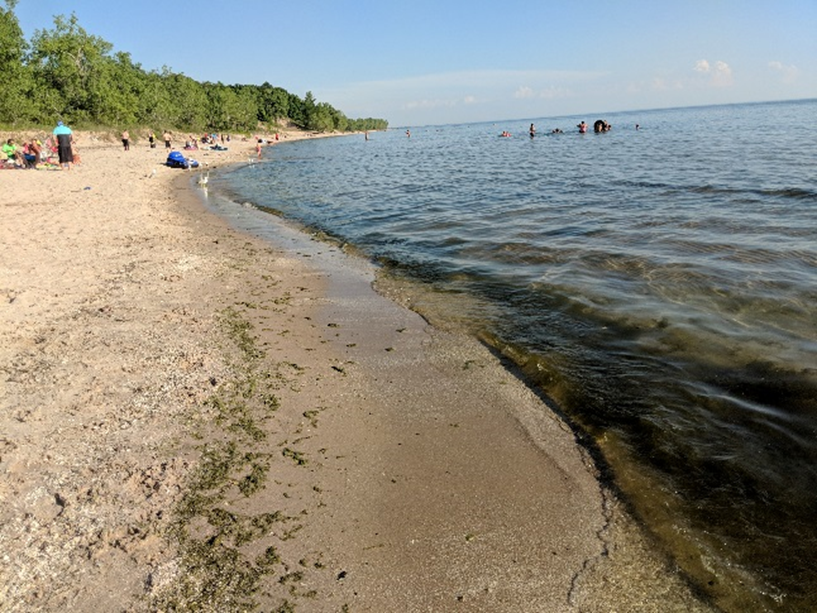Written by Kaitlin Fello and Rich Adams
Photo by D.E.C.
It’s Spring in the Finger Lakes, and has felt like it now for almost two months. Of course, we can never really be sure when a winter day will find us again, at least until May arrives. With 2021 being one of the warmest Spring we’ve seen in years, nuisance algae will hit Seneca Lake shores early this year and will begin to let off the foul smell we sometimes refer to as “rotten eggs”.
There are many species of this filamentous, attached algae, but the most prevalent in Seneca Lake are known as Cladophora and Spirogyra. These species of algae are different from the floating (or “planktonic”) forms of algae in that their cell assemblage structures are long and fibrous (can be several inches long), and they are attached to hard bottom lake surfaces, like rocks or wood. This algae is not invasive, but when it proliferates, it can be quite a nuisance.
the most prevalent in Seneca Lake are known as Cladophora and Spirogyra. These species of algae are different from the floating (or “planktonic”) forms of algae in that their cell assemblage structures are long and fibrous (can be several inches long), and they are attached to hard bottom lake surfaces, like rocks or wood. This algae is not invasive, but when it proliferates, it can be quite a nuisance.
In most summers, we see this nuisance algae detach from hard surfaces and wash ashore in late June or July, but you may see it early and in abundance this year. When the filamentous algae does reach your shores and begins to build up, the anaerobic conditions causes the conversion of sulfur compounds into smelly sulfides and other compounds, similar to anaerobic sewage. Although these conditions are temporary, lasting until the muck washes away in vigorous storm or wind events, they are a definite annoyance. Also, anaerobic conditions in water can harbor unwanted bacteria, so contact in these muck zones should be avoided.
There are a few ways to deal with this stinking issue quickly and quietly on your own property. One option is to rake the shoreline piles away from the water, spreading it out so it will dry rapidly, which will break the foul smell. These algae are also great for compost! They are full of the nutrients your compost needs to break down other organics in your compost pile. Proper layering of algae in composting is important, so be sure to learn more before moving ahead with this option. If you don’t have a compost pile to nurture, you might consider using algae as a fertilizer! Algae is made up of living organisms and breaks down quickly when added to soil, adding phosphorus, nitrogen, and potassium.
Please visit the NYDEC Cladophora webpage to learn more about this nuisance algae.
.png)